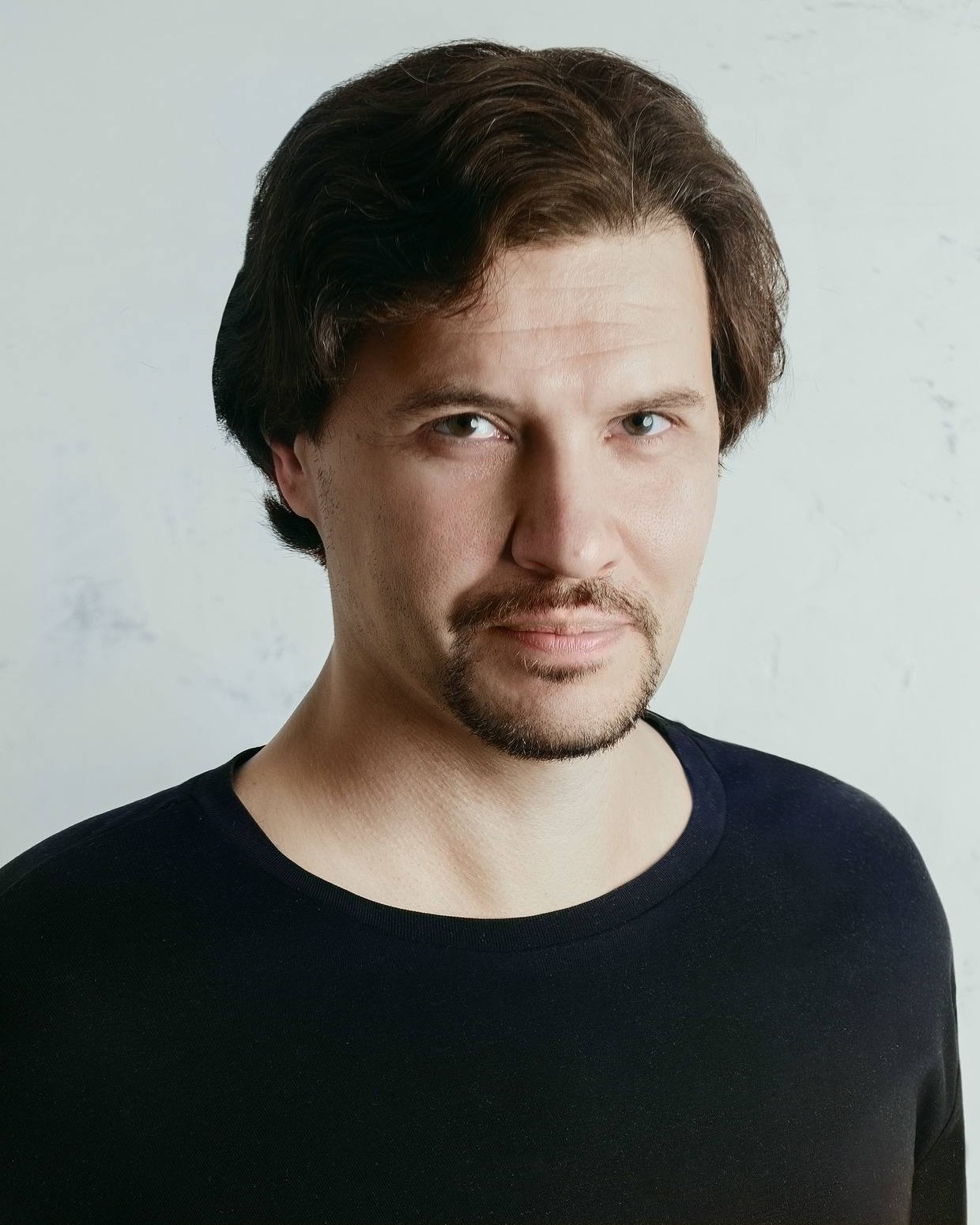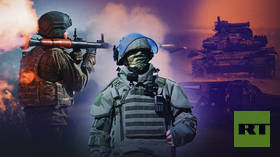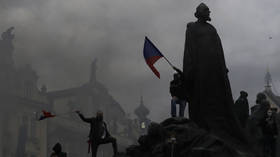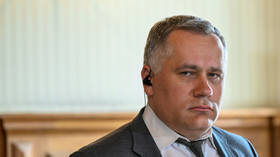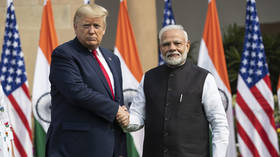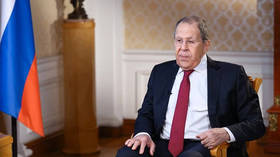Sergey Poletaev: How incompetent leaders put Ukraine on the road to disaster
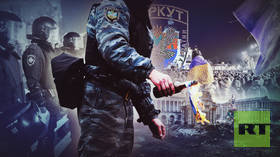
Last week, the West celebrated the tenth anniversary of what was known as "Euromaidan." On November 21, 2013, then-President Viktor Yanukovich announced that Ukraine was suspending preparations for signing an EU Association Agreement, and journalist and activist Mustafa Nayyem called on people to go to the Maidan Square in Kiev to protest the decision.
He promised them tea and a good time.
At the start, few took the events seriously – Ukrainians were used to seeing tents on Kiev’s main square since the 2004 Orange Revolution, as the political circus often moved beyond the walls of the Verkhovna Rada (the national parliament) and ended in fights.
The opposition had gathered crowds of protesters when Yanukovich extended the Black Sea Fleet Agreement with Moscow, after the cancelation of former President Viktor Yushchenko’s constitutional reform, following the arrest of ex-Prime Minister Yulia Timoshenko, and a dozen other less important events. This time, it seemed like things would be the same – the protesters would make some noise, then it would get cold out on the street and they would go home. Moreover, compared to the mass protests of former years, there were not that many people around.
They’re just kids!
On November 30, 2013, an event happened that helped determine the course of history. That night, Berkut special police forces (a sort of Ukrainian SWAT) violently dispersed a tent camp around the Independence Monument. The whole country saw the “brutal beating” of the students on TV, and it caused an uproar – some people were outraged while others supported the authorities. It hardly mattered that most of the so-called ‘students’ had graduated from university back in Soviet times, and some were even retired – the Maidan events had a snowball effect, and by late February, ended in major bloodshed and a coup d’état.
There are a lot of conspiracy theories around the events that unfolded that night. Some say it was a deliberate provocation organized by the head of the presidential administration, Sergey Lyovochkin, who broadcast the events on his own Inter TV channel, knowing the kind of public reaction they would spark. Lyovochkin supposedly wanted the opposition to bring down his boss, Yanukovich.
However, this scenario is most likely not true. Firstly, Lyovochkin’s motive remains unclear. But even more importantly, never – neither before nor after 2013 – did Ukraine have such a clever ‘puppeteer’ capable of creating and executing such a cunning plan, forcing both the security forces and the opposition to dance to his tune. Ukraine is not ruled by a secret lodge but by political hodgepodge. The actions of its politicians have always served petty and short-term purposes – this has been Ukraine’s main problem and the reason why it has suffered such a tragic fate.
In 2010, entrepreneurs protesting against tax reform near the Independence Monument were also dispersed by the police, under the same pretext of putting up the Christmas tree. At the time, Lyovochkin was already the head of the presidential administration – does this mean that Yanukovich had an obvious traitor holding such an important post for three whole years?
Apparently, there was another reason for the aforementioned events. On the night of November 30, a trigger went off in Ukrainian society, which by that time was torn apart by contradictions. The lid finally flew off from the boiling cauldron and the contents spilled over. Meanwhile, local elites were too busy fighting against each other and either did not understand what was happening or could not do anything about it.
Marching up the Vladimirsky Descent
From that moment on, each step taken by the Kiev authorities was worse than their previous mistake, and every new decision pushed Ukraine further into the abyss.
Yanukovich blamed the Berkut special forces for the violence on November 30, and in doing so, not only deprived himself of the support of the security services but even earned the contempt of the part of the population that was against the Maidan.
To fight the protesters, Yanukovich resorted to the services of the Titushky (mercenary provocateurs). He brought these ‘tough guys’ to Kiev from Ukraine’s southeastern regions for a small fee, and practically legitimized violence against civilians, which has continued in Ukraine to this day.
Yanukovich couldn’t deal with the pogroms carried out by pro-Maidan activists in Kiev (regular police forces grew weaker while Berkut, whom the authorities continued to blame for the violence, eventually stopped carrying out government orders), and likewise, he couldn’t prevent the seizure of regional administration buildings in the west of the country. Seeing the weakness demonstrated by the authorities, the opposition rode the wave of opportunity.
Yanukovich fled from Kiev, where bullets were already whistling overhead and the protesters were taking over the streets. At the time, he could still have prevented the coup since he remained the legitimate president, and anti-Maidan supporters were ready to support him in Kharkov. But he chose to secretly flee to Russia and hand Ukraine over to an aggressive minority, pushing the country into an inevitable civil war.
Aleksandr Turchinov – one of the Maidan leaders who, bypassing all laws, was appointed acting president of Ukraine – continued the ‘glorious march’.
Turchinov did not try to negotiate with the Maidan's opponents who, abandoned by Yanukovich, moved to Donetsk and Lugansk (most of them were members of the Party of Regions and its combat unit – Aleksandr Zakharchenko’s Oplot militia). Instead, Turchinov ordered the army to take action against them – even though the events that took place in Donbass in the spring of 2014 were not that different from the protests that erupted in the western regions of Ukraine that same winter and received the full support of the West, the Maidan leaders, and Turchinov himself.
The pogroms going on all over Ukraine were directed against those who did not accept the new government, and culminated in the fire at the Odessa Trade Unions House in May 2014, where many people were burned alive. The new government approved the actions of the rioters, and the pro-Maidan media and social media networks raved about the “well-done barbecue,” “smoked Colorados” (‘kolorady’ – a derogatory term for pro-Russia activists), and so on. The spiral of violence continued to unravel, and the war in Donbass flared up.
Ukraine as the battlefield
Pyotr Poroshenko, who was elected president in June 2014, promised to stop the conflict – and in fact, had the opportunity to do so – but instead, fully backed by the West, he decided to deploy more force.
After suffering a crushing defeat in Donbass, Poroshenko was forced to sign the Minsk I agreements in the fall of 2014. Instead of implementing them, however, he continued to wage war – and whether the decision was his own or he was pressured into it by Ukrainian radicals or the West is no longer that important.
Kiev’s second defeat in early 2015 resulted in the Minsk II agreements – which, once again, were sabotaged by countless provocations over the years, and were never implemented. The series of attacks on Donbass in 2018, before the FIFA World Cup, was particularly cynical. Civilians in Donetsk, Gorlovka, and other cities were killed merely because Kiev wanted to disrupt the sporting event in Russia. In Donbass, these actions only sparked increased hatred against Kiev and eliminated the last chance of reunification.
In 2019, Vladimir Zelensky was elected president. Like his predecessors, he promised to end the war and find a common language with Russia – and like his predecessors, he did exactly the opposite. In fact, years of incompetent policy caused Ukraine to completely lose its independence and become a battering ram used by the West against Russia. In Zelensky’s place, even the most competent politician would not have been able to fix anything.
Moscow realized that things had reached the point where they could not be peacefully solved and that Ukraine – with its population indoctrinated with an anti-Russian ideology, urged and supported by the West – was about to move from words to actions. This forced Russia to take action to protect its own national interests and eliminate the threat on its borders.
Tis but a scratch
Russia’s military operation was the culmination of Kiev’s nine-year journey which began on Maidan Square and led to the confrontation with Russia and the destruction of Ukraine itself. But even in 2022, Zelensky's team still had a chance to fix things, because during talks in Istanbul, Ukraine was offered a highly advantageous compromise. In fact, if Kiev had accepted it, this would have probably disappointed many Russians.
But once again, Ukraine decided against peace, and decided to continue fighting and stay on the road leading to hell. As a result, the country did not just become weaker, it physically shrank as hundreds of thousands of people died or became crippled on the front, and millions more fled.
In the fall of 2022, the Ukrainian army conducted two successful military operations, and once again had the chance to profit from the situation and return to the Istanbul deal. At the time, Moscow did not firmly hold the territories beyond Donbass and Crimea, and most likely, Ukraine could have gotten them back.
Instead, Kiev decided to blow up the Crimean Bridge. As a result, the land corridor to Crimea became critically important for supplying the peninsula, so Ukraine lost two more regions – Kherson and Zaporozhye.
In the summer of 2023, Ukraine attempted an adventurous counteroffensive and failed. This outcome shocked the West and deprived Kiev of support – and with it, the chances of a military victory. Taking advantage of the enemy’s arrogance, Russia won the main battle of 2023 by focusing on defensive tactics, and apparently turned the wider tide.
Now, entering its second winter of war, Ukraine keeps shooting itself in the foot – instead of ordering its weakened army to focus on defense, Kiev pushes soldiers into useless attacks for the sake of propaganda.
No one knows what turn the conflict will take or when it will end. But what we do know for certain is that out of all the possible options, Ukraine keeps choosing the worst ones over and over again.
